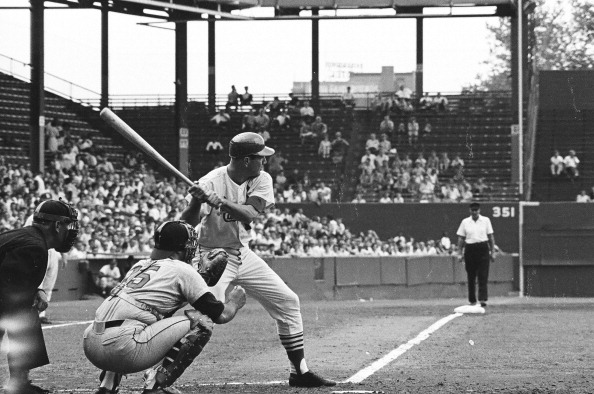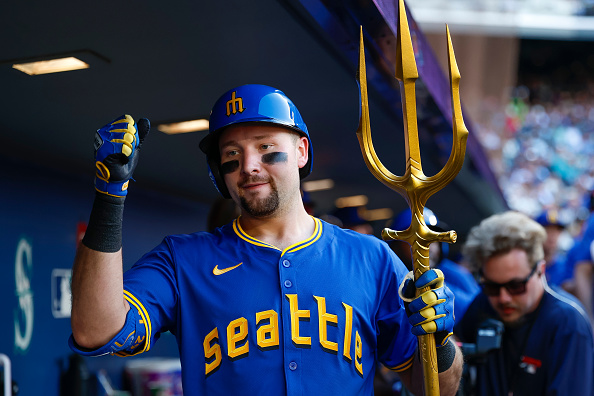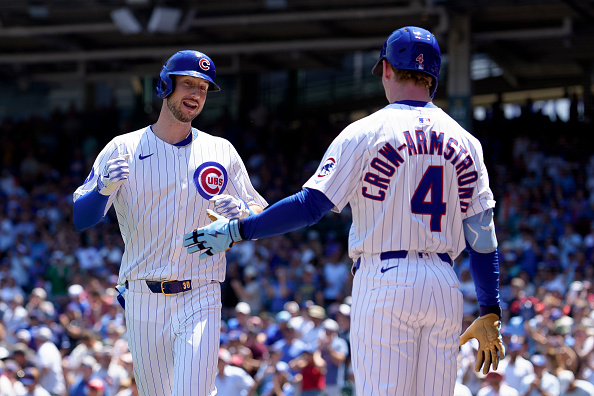After taking last week off, we are back with another edition of Flashback Friday. This week we look at a player who was born on this day in 1931. Ken Boyer is considered by many among the top dozen third basemen to ever play, yet he is still not in the Hall of Fame. We will cover that later in the article as he is one of my All-Time snubs for Cooperstown.
Be sure to check out all of the other Flashback Friday articles.
Kenton Lloyd Boyer was born on May 20, 1931, in Liberty, Missouri. He was one of 14 children, and one of three brothers who played in the majors. Ken was better than the other two, Cloyd and Clete. He was originally signed as a pitcher, but his bat was too good, and his pitching wasn’t impressive. While still in the minors, Boyer was drafted to fight in the Korean War. When he returned, he was sent to Double-A in 1954 and was the starting third baseman for the St. Louis Cardinals in 1955.
Career
Boyer had a solid rookie season, slashing .264/.311/.425 with 18 home runs. He took a big step forward the following year and batted .306, with 26 homers, 91 runs, and 98 RBIs. He garnered his first All-Star nod as well as getting a couple of MVP votes. The Cardinals decided to put him in centerfield in 1957 to make room for youngster Eddie Kasko. While Boyer was fine with the move and played well defensively, his offense suffered. In 1958, St. Louis brought in Curt Flood and mover Boyer back to third where he won the first of his five Gold Gloves.
Over the next five seasons, Boyer blossomed into the second-best third baseman in baseball after All-Time great Eddie Mathews. From 1959-1963, the Cardinals’ man at the hot corner was an All-Star each year, won four Gold Gloves, and was in the top 10 of MVP voting three times. However, the best was yet to come for St. Louis and Boyer.
It All Came Together
The Cardinals had been creeping up the standings, and, in 1964, they took the National League Pennant, winning 93 games. Boyer was the cleanup hitter and led the league in RBIs with 119. He was the first third baseman since Heinie Zimmerman in 1917 to lead the NL in RBIs. He also won the MVP that season and led the team in triples (10), home runs (24), and runs scored (100). While the Cardinals staff was very good, and Bob Gibson, along with Lou Brock, got the well-deserved attention, Boyer was the glue of the team. He was the captain, and his quiet leadership kept everyone focused.
They headed into the World Series against the vaunted New York Yankees. With the American League champs up two games to one, and up 3-0 in Game Three, Boyer hit a Grand Slam off of starter Al Downing in the fifth inning to put the Birds up 4-3. That would be the final score as St. Louis evened the series. It would prove to be a huge moment as the series went to seven games. Boyer went 3-for-4 with a solo homer in Game Seven as the Cardinals won their first World Series in 18 years.
The Decline
Boyer slumped a bit in 1965 as age and back issues started catching up. He still had a decent year and was solid in the field as usual, but he was starting to come to the end of his playing days. After the season, he was traded to the New York Mets for Al Jackson and Charley Smith. Boyer would have another decent season with New York, putting up a .719 OPS with 14 home runs. He was traded again the following year, this time to the Chicago White Sox. They wound up releasing Boyer in 1968 and the Los Angeles Dodgers scooped him up. He re-signed with the Dodgers in 1969, but only played 25 games, mostly as a pinch-hitter.
After The Game
Boyer coached in the Cardinals organization for a few years. When he was passed over for the managerial position when Red Schoendienst retired in 1976, he went to coach in Triple-A for the Orioles in 1977 and 1978. St. Louis came calling when the position opened up again, and Boyer managed the Cardinals for the last 143 games of 1978. He took the team to an 86-76 record in 1979 as Keith Hernandez tied for the NL MVP. Unfortunately, after starting 18-33 in 1980, Boyer was fired.
He stayed on as a scout and was all set to manage Triple-A Louisville in 1981, when health concerns cropped up. Boyer was diagnosed with lung cancer and passed away at 51 years old on September 7, 1982. His number 14 was retired in 1984, and he remains the only Cardinals player to have his number retired and not be in the baseball Hall of Fame.
Hall of Fame Case
Boyer was a fixture at the hot corner for the St. Louis Cardinals from 1955-1965. In those 11 seasons, Boyer has the accolades, winning five Gold Gloves and the MVP in 1964 leading the league in RBIs with 119. That year Boyer was also instrumental in the Cardinals defeating the Yankees in seven games to take the World Series. In the aforementioned 11-year stretch, he slashed .293/.356/.475, had a .364 wOBA, and a 119 wRC+.
He is one of only five third basemen according to Fangraphs to have a 150/100 oWAR/dWAR. The others are Mike Schmidt, Wade Boggs, Scott Rolen, and Adrian Beltre. Boyer also has some solid counting stats for his career. He had over 2,000 hits, 1,100 runs, 1,100 RBIs, and hit 282 HRs. All of this makes it surprising not only that he isn’t in the Hall of Fame, but that he only got nine votes and dropped off the ballot after his fifth year of eligibility in 1979.
Conclusion
Ken Boyer was a great third baseman and if not for Mathews, would have been the best for a solid 10-year stretch from 1955-1964. I would put him close to top 10 at the position all-time. The hot corner is underrepresented in Cooperstown. Ron Santo finally made it in in 2012, and Scott Rolen has been gaining some traction while still on the ballot. While Boyer’s offense doesn’t get him in alone, the combination of being very good at bat and also excellent with the glove should be enough. It is unfortunate that consistently great play doesn’t hold more weight when compared to a shorter peak when it comes to voting.
Check us out on our socials:
Twitter: @PTSTNews and @TalkPrimeTime
Facebook Page: Prime Time Sports Talk
Join our Facebook Group: Prime Time Sports Talk
Instagram: @primetimesportstalk
Follow Johnnie Black on Twitter @jball0202
Main Image Credit: Embed from Getty Images








One Response